B2B outbound sales strategies became less popular in the last couple of years. They were made to take a step back since the inbound approach became more accepted among marketing and sales professionals. However, just because inbound marketing and sales are now acclaimed as the prevailing strategies, it does not mean that the B2B outbound approach should be abandoned.
Instead, it makes more sense to take the lessons from the inbound concept and apply it to B2B outbound marketing and sales. Follow our article to learn why B2B outbound sales still works, what the fundamentals of building outbound sales strategy are and the best tips for boosting your sales results.
B2B outbound vs inbound
You might be asking yourself what the main differences between the inbound and outbound approach are, and why they are so important in a B2B environment. The simpliest explanation is the following: in outbound sales or marketing, you are looking for the leads. On the other hand, in inbound sales and marketing, leads are coming to you.
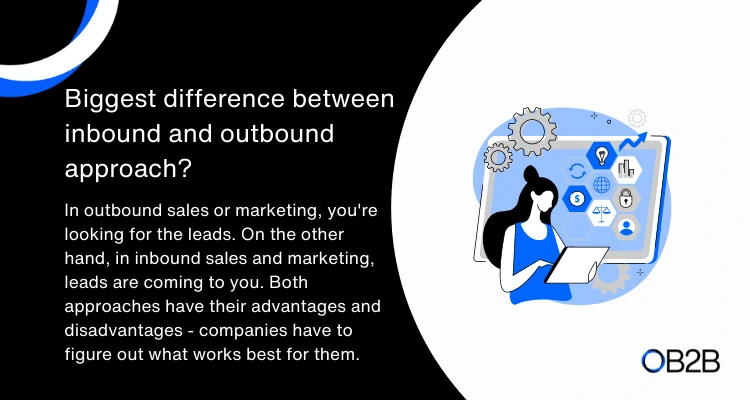
Here is a more thorough explanation of B2B outbound and B2B inbound sales techniques.
What is B2B outbound sales?
B2B outbound sales include identifying, reaching out and following up with prospects you don’t necessarily know are interested in your product. It involves techniques such as B2B cold calling – reaching out to leads by phone – and B2B cold emailing – sending emails to prospects.
In this approach, business development representatives are trying to interest their leads for their product, assuming that they could need it according to limited information they know about them. This is why it is essential to find experienced business development representatives that will build relationships with prospects and evaluate if they fit their buyer persona profile.
B2B outbound sales can be delicate, yet it is also hard work. This is why companies often outsource their sales and hire outbound call centers or telemarketing agencies.
What is B2B inbound sales?
In a nutshell, inbound sales includes reaching out to leads that were generated by marketing activities. In comparison to B2B outbound sales, the business development representatives already know that the leads they will be contacting are more or less interested in their product or service.
Leads are usually generated by gating content such as eBooks, guides, infographics or webinars. The contact information is then given to business development representatives who can reach out to prospects and base their conversation on their interest in the content.
Benefits of B2B outbound sales over inbound
You can probably find a myriad of sources claiming that inbound marketing and sales are better than B2B outbound ones. However, the fact is that B2B outbound sales still bring results – and it does have some advantages over inbound sales.
Furthermore, inbound and outbound represent two faces of the same coin – sales! This means that B2B outbound approach can be enriched by some inbound tactics and vice versa.
But, let’s focus on the benefits of B2B outbound sales in comparison to their inbound counterpart.
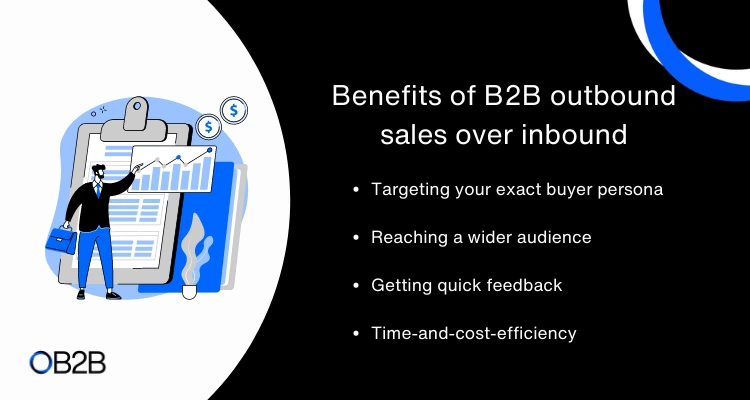
Targeting your exact buyer persona
In inbound sales, you might get a lot of leads that do not get you anywhere. The content that your marketing team puts out there is targeted for a certain audience, but you can never be sure that you caught the interest of the decision-maker you need to make a sale.
For example, you might be selling a fin tech product and you want to reach CEOs or CFOs of enterprise-level companies. However, the content that your inbound team creates is attracting accountants and financial officers in mid-sized organizations.
On the other hand, in B2B outbound sales, you can create various buyer persona profiles and reach out to them on appropriate channels. In a sense, you would go directly to the decision-maker and interest him or her in your product.
Reaching wider audiences
With inbound marketing, you are attracting prospects to your website and content. However, B2B outbound is all about reaching out to an even wider pool of prospects that are not aware of your product or service yet. They might not even know that their problems could be easily solved with your solution! After all, 82% of buyers admit that they have booked meetings with salespeople after a series of contacts that started with B2B outbound cold calls.
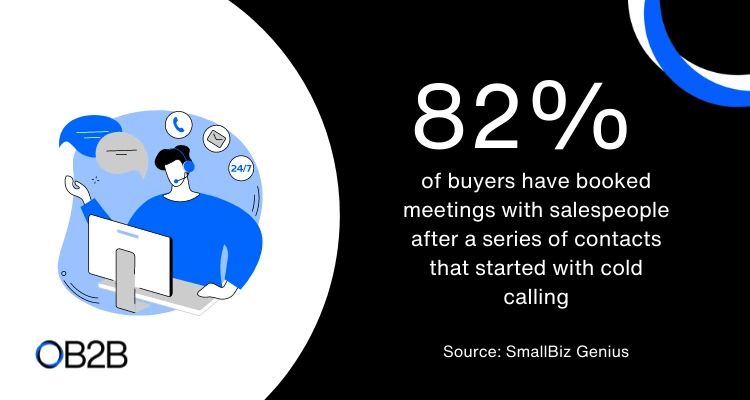
Getting quick feedback
When performing B2B outbound activities, you are directly contacting your target personas. In other words, you are not waiting for all the stages of inbound marketing to happen. You are skipping the phase of raising awareness and generating trust – and offering your product or service directly.
Of course, skipping the many marketing funnel stages is not an outright benefit – but you find out if your prospect is interested very quickly. Moreover, there is value in getting no for an answer – at least now you know to stop wasting your time on someone who is not interested in your product and can focus on reaching others that might be.
Time- and cost-efficiency
In order to generate leads, inbound marketing strategy needs to be developed, implemented and going or for some time. Building inbound marketing is not a quick process, and it can take up to several years to get to the point of building a high-quality pool of continuously incoming prospects.
On the other hand, business development representatives are reaching out to prospects directly with B2B outbound sales tactics. By doing that, they are saving the time and costs it takes to develop inbound marketing strategies.
How to plan your B2B outbound strategy
Even though it is a pretty straightforward approach, B2B outbound sales still requires planning. If you want your B2B outbound strategy to be successful, it is essential to follow the basic rules outlined in this chapter.
What is most important to remember is that the steps of B2B outbound sales strategy are circular in nature. This means that you should always review your own process, go back to the first step and fine tune it to get better results.
Educating your business development representatives
Your business development representatives are exactly that: direct, front-line representatives of your organization to your potential customers. You need them to be respectful, knowledgeable of the problems your buyers are facing, persistent and much more.
As business development representatives are performing the B2B telemarketing duties, they need to freshen their sales skills. Moreover, for your B2B outbound sales to work, they need to be motivated and occasionally supervised by more experienced sales leaders.
Your whole B2B outbound strategy relies on the performance of your business development representatives. Do not skip the opportunity to equip them with the best possible education on how to perform this crucial job.
Identifying your buyer persona profile
If there is one thing that B2B outbound sales has successfully borrowed from its inbound counterpart, it is targeting. Building your buyer persona profile is crucial to narrow down your pool of prospects to those that are most likely to make the purchase.
Although it is a part of an inbound strategy, identifying a buyer persona profile is also a crucial part of a B2B outbound process. It helps business development representatives make more targeted calls, know their prospects better and increase the chances of a sale.
Establishing the right channels
What are the right channels to approach your leads? Nowadays, business development representatives use multi-channel approach to reach their prospects. Of course, the rise of LinkedIn and other social networks has influenced B2B outbound practices immensely. LinkedIn research shows that more than a half of revenue is influenced by social selling in 14 common industries.
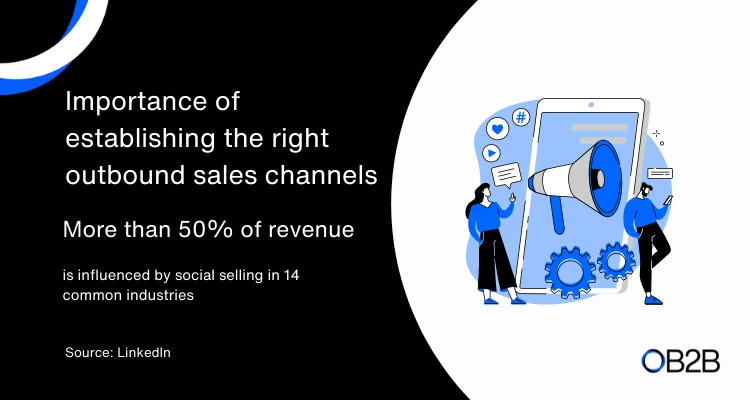
However, this does not mean that cold calling is dead, nor that you should avoid face-to-face meetings. You just have to see what works best for you. Chances are that you are going to use all these approaches combined for the best outcome of your B2B outbound strategy.
Setting time aside for sales activities
Planning your B2B outbound strategy requires taking time out of your business development representatives’ schedule to perform calls or spend time on social selling. In order to be most productive, they have to set time aside for B2B outbound activities. Best practices call for up to 4 hours a day spent on outbound calls, follow-ups and other.
Measuring effectiveness
You cannot know how effective your B2B outbound sales are if you are not measuring your efforts! In order to learn along the way, it is best to become best friends with your CRM and update the information in it constantly. You will be able to optimize your B2B outbound strategy only if you have a healthy database to start with!
How to boost your outbound sales
Most companies are utilizing both inbound and outbound sales strategies, especially in B2B. However, sometimes the moment is right to take things to the next level and amplify your efforts for improved results.
If you have already been utilizing outbound sales in your company, but got stuck, here are three straight-forward ways to increase your success.
Scale up
It is as simple as that – if you want more customers, you need to enrich your pipeline. In order to populate your pipeline with more deals and prospects, you need more manpower! Therefore, you can hire more business development representatives to help you boost your B2B outbound sales.
However, another good method is to outsource a business development agency. The business development representatives working there are already trained and highly skilled, and you will be able to see the first results of your B2B outbound scale up very quickly.
Moreover, hiring an external agency has many other benefits. The outbound call center prices are composed in several ways, so you can find the option best suited to your business needs.
Optimize your process
There are several parts of your B2B outbound strategy that can be put to test in order to get optimized, like cold emails and call scripts.
If you have a good CRM, you will be able to test both your email subject lines and email copy. Moreover, you can put various parts of your cold calling script to test. For example, consider this: research shows that opening lines are crucial to the outcome of a sales call. While starting with “Did I catch you at a bad time” decreases your chances of booking a meeting by 40%, asking “How are you” at the beginning of the conversation increases the likelihood of booking a meeting 3.4 times.
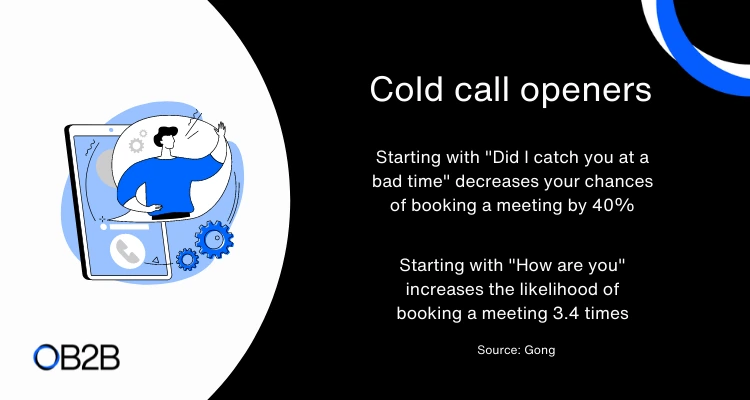
Start using advanced technology
What often sets successful business development representatives apart from their unsuccessful counterparts is leveraging technology into their favor. Sales engagement platforms and CRMs with built-in analytics are crucial to making informed decisions and creating strategies that will boost your B2B outbound sales.
Inbound and outbound in B2B – best when used together?
Although B2B outbound marketing and sales strategy are still very relevant, it does not mean you should drop your inbound approach. Both tactics are valuable and can be used together to bring best results. Moreover, leaders from 84% of mid-sized B2B companies agree that a combination of inbound and outbound strategies are responsible for generating revenue.
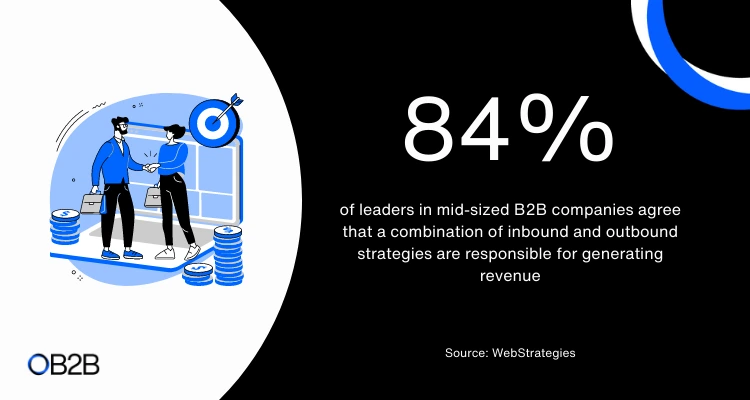
After all, B2B has its own rules. One thing that sets it apart from B2C is the length of the sales process. In B2B, it is all about making those personal connections to prospects and customers to increase their trust. However, trust can also be established by showcasing your professional expertise with inbound, content-based marketing.
You can mix inbound and outbound B2B strategies – and it also makes sense to outsource an external agency to take over some of your leads. After all, companies mostly outsource to cut costs and to enhance service quality, so you can also expect these benefits when outsourcing your outbound sales.
